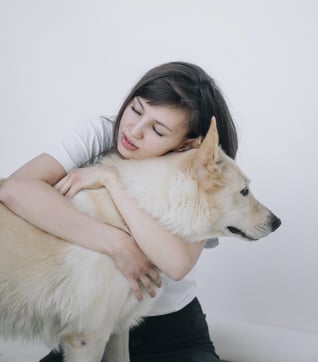How Can I Make Sure My Pet Is Transported Safely?
Published on: May 4, 2022 | Author: Starwood Pet Travel

Pet transport via airplane is overwhelmingly safe. Statistics collected from mid-2005 through the end of 2012 show the chance of death, injury or getting lost is about 0.009%. That is extremely low, considering the airlines transport more than 600,000 animals each year. Nonetheless, that doesn’t mean you can’t take steps to ensure your pet is as safe and comfortable as possible on his or her airplane voyage.
Work with a pet transport professional.
This is your best bet to ensure that things go as well as possible for your furry family members. Where are you headed? The more pets you have and the farther you’re going – especially if you’re moving from one country to another – the smarter it is to get professional help.
Animal transport companies are your pet’s advocate throughout the process. They are familiar with the people, procedures and potential snags, so they can be there for your pet in ways you cannot.
Not all airlines are equally pet-friendly. Some have rules about how many pets can travel at one time and some have breed restrictions. The paperwork for international pet travel can be extensive, and sometimes discovering what paperwork you actually need can feel like an endless treasure hunt. Pet transport companies understand all these intricacies. Relying on them for everything from planning your pet’s flight schedule to acquiring the right kennel and documentation can be a life-saver, in more ways than one.
Know the risks.
Short or snub-nosed dogs and cats may be at higher risk for problems related to airplane travel, since they have existing respiratory challenges. However, that doesn’t mean they can’t still fly safely. Talk with your pet transport company about which options you may have for your brachycephalic pet. Learn more about the safety of air travel for your snub-nosed pet.
Weather can present a safety risk for pet travel. You don’t always get to choose when you move, but be aware that your pet’s travel plans could potentially change pending safe temperatures if it's too hot or too cold at any stop along your pet's travel route. This can vary daily depending on the weather forecast. There’s nothing you can do, and it’s frustrating, but your convenience is easily trumped by your pet’s safety. One more good reason to work with a professional is that you have extra help when plans do get disrupted.
Consult with your vet about your cat or dog’s medical history, current needs and overall health. Safe transport starts with an animal that is in good health, not too elderly and generally capable of withstanding change.
Know the rules.
It is never OK to sedate your pet prior to air travel. You might think the drugs will calm them, but in fact tranquilizers reduce your pet’s ability to control their movements and balance. That’s unsafe and one more stressor they don’t need. Also, the effects of sedation at altitude can be very different than on the ground - and this can cause respiratory or cardiac problems.
One of the most important aspects of safe pet travel is the kennel your pet will ride in. Airline-approved kennels must be made of hard plastic or wood, be well-ventilated and be large enough for your pet to stand up, sit down & spin around comfortably. Wire crates or collapsible kennels are NOT acceptable for pets traveling on an airplane. The only exception is if your pet is traveling in-cabin, then some airlines will allow an approved soft-sided carrier.
Do your research and think about what your trip will entail and what your airline allows. A soft, shoulder-bag style carrier can be a lot easier to take through the airport than a hard-sided kennel, because it leaves both hands free. A 15-pound dog or cat gets heavier the farther you have to carry it, and the carrier will have to go under the seat in front of you, so size and shape matter for that as well.
Be prepared.
Planning ahead and preparing your pet in advance can reduce anxiety for everyone involved. Try to maintain your pet’s routine as much as possible, given the inherent disruption of packing and moving. The less wary or worried you are, the less stressed they will be when their departure date arrives. And less stress is safer.
Starwood Animal Transport has rebranded to Starwood Pet Travel. We are still the same great company with the best team, just now with a slightly different name.
Subscribe to the Blog
Enjoy our content? Get them sent to your inbox!
Subscribe Now!


